With a few protectant products and a little care, premature sidewall damage can be greatly reduced
If you own a motorhome long enough, you will eventually have to replace the tires. Most coaches require six tires, and a tag axle means two more. If you have priced tires lately you know that it is a major expense, so much so that it will make you rethink your tire care strategy to ensure you get 100 percent of their intended life.
When looking at the Michelin tire care handbook, the company has specific suggestions on the life of motorhome tires and when to replace them:
“While most tires will need replacement before they achieve 10 years, it is recommended that any tires in service 10 years or more from the date of manufacture, including spare tires, be replaced with new tires as a simple precaution even if such tires appear serviceable and even if they have not reached the legal wear limit.”
Despite the maximum 10-year life suggested by Michelin, very few owners obtain this life due to sidewall cracking. Since motorhomes are usually driven less than automobiles, this means they sit parked in places such as RV resorts, garages, driveways and storage lots. This much sitting around results in a lot of UV exposure for tires unless they are properly protected. Tires exposed to damaging conditions such as high UV, or even ozone, can experience premature sidewall damage (cracking) that often results in early replacement. Other than road hazard failures and blowouts, sidewall cracking is one of the most common reasons owners replace their tires earlier than expected.
In addition to service-life limits, Michelin also has some very specific suggestions on how to care for its tires, and we have followed those suggestions carefully for seven years on the tires shown in these photos. Michelin recommends cleaning the tires with a mild soap. If you plan on using a tire dressing, the company suggests not using one that contains petroleum distillates, alcohol or silicone.
With these suggestions from Michelin in mind, we have used the following process since June 2007, and as of this writing the 7-plus-year-old tires look perfect. Just a few months ago while talking about tires with a fellow motorhome owner, he walked over to our coach and asked about the age of the tires. When I said they were 7 years old, he was shocked. He assumed they were brand-new because they certainly looked that way. Your results may vary, but if you want to increase your motorhome tire life, follow this program and you can save yourself a lot of money.
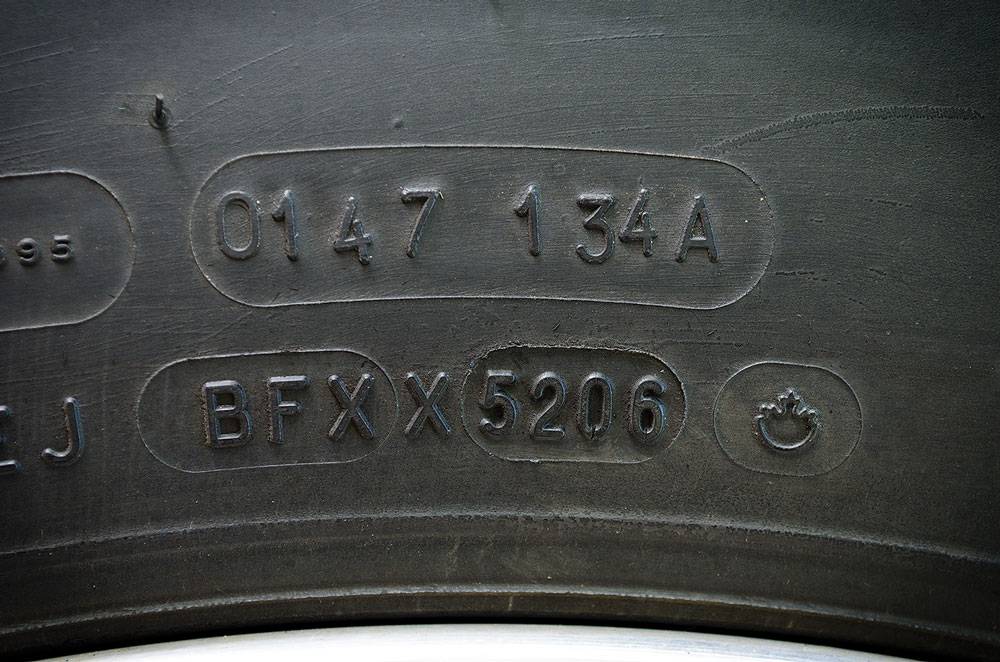
Just to show we are not kidding, here is the DOT date code on the tires we are using as examples. The tires were manufactured during the 52nd week of 2006. The coach was purchased new in June of 2007 and has been in use since then.
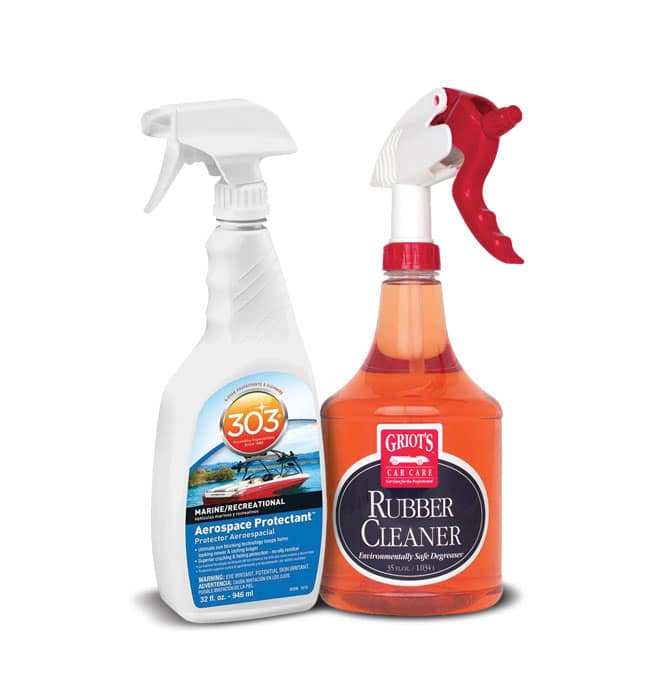
In order to properly clean and protect motorhome tires you need the right products. We have always used this combo and can attest that it works great. To get started, you’ll need Griot’s Garage Rubber Cleaner and a good scrub brush, also from Griot’s. To protect the tires (or any other vinyl or rubber on the coach) we use 303 Aerospace Protectant.
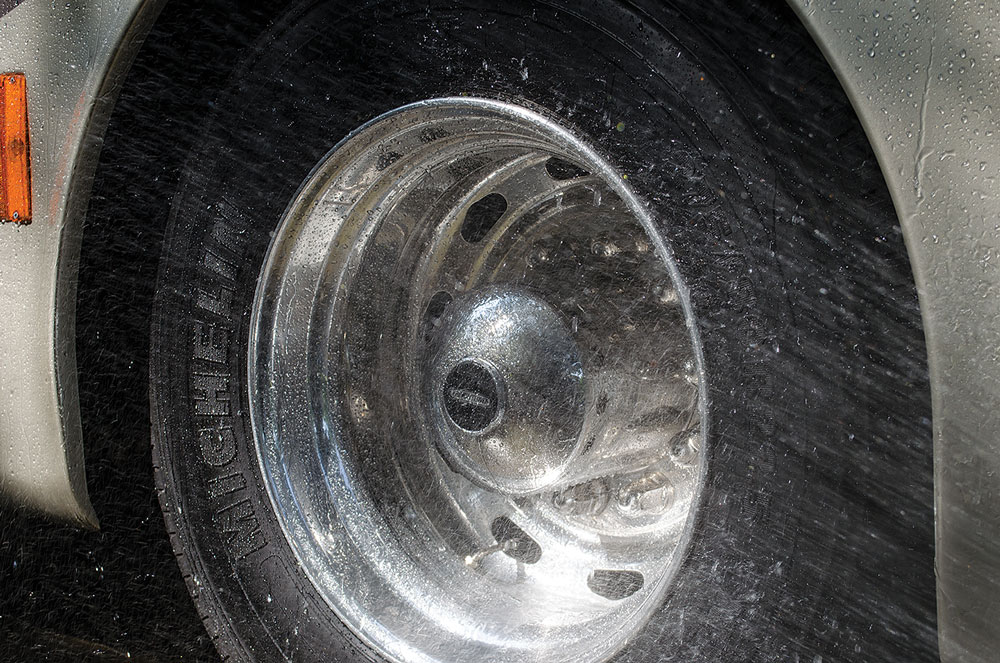
Using a water hose and spray nozzle, completely flood the tire to rinse off all loose dirt and grit.
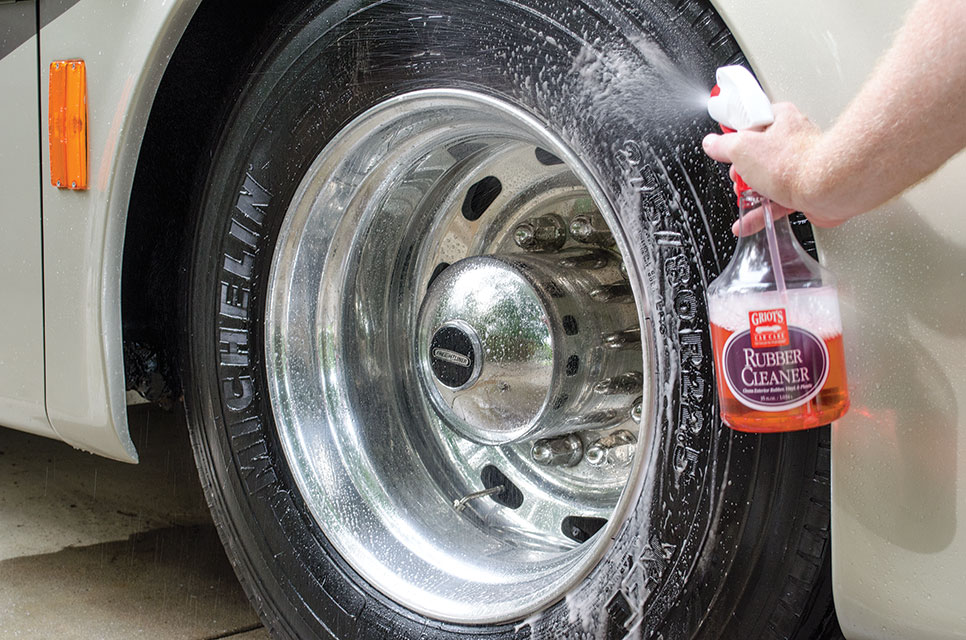
Next, spray the tire with Rubber Cleaner until it is completely covered. Unlike harsh cleaners, this one is safe for tires and other rubber in your coach. It cleans without damaging or accelerating the aging of the tire.
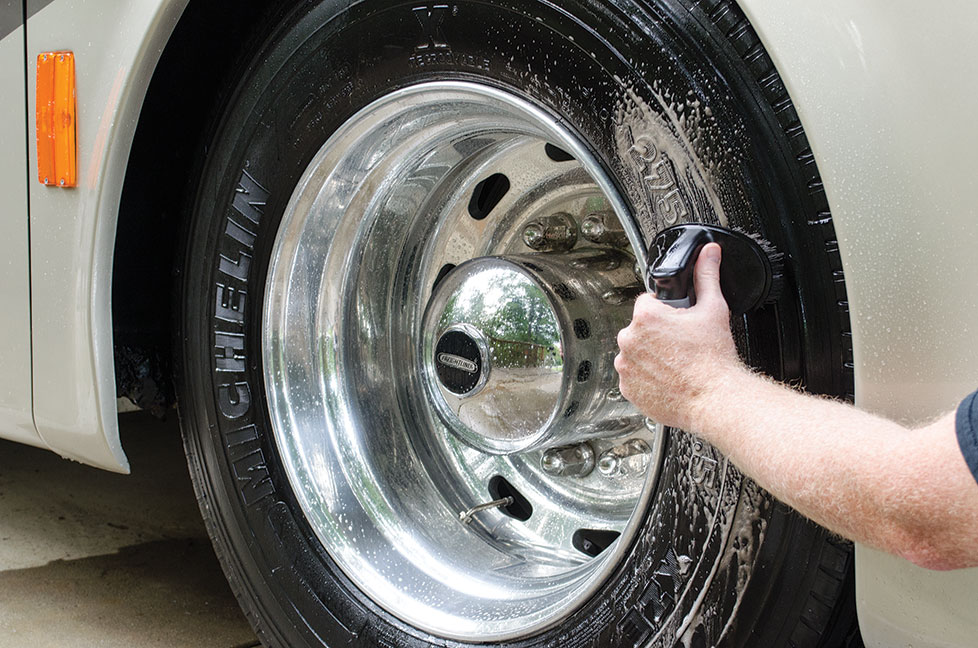
Scrub the tire all the way around to remove road dirt, grime and oils. Notice the color of the foam as it starts to turn brown from the grime it is removing. Then finish scrubbing and rinse completely to remove all soap and dirt.
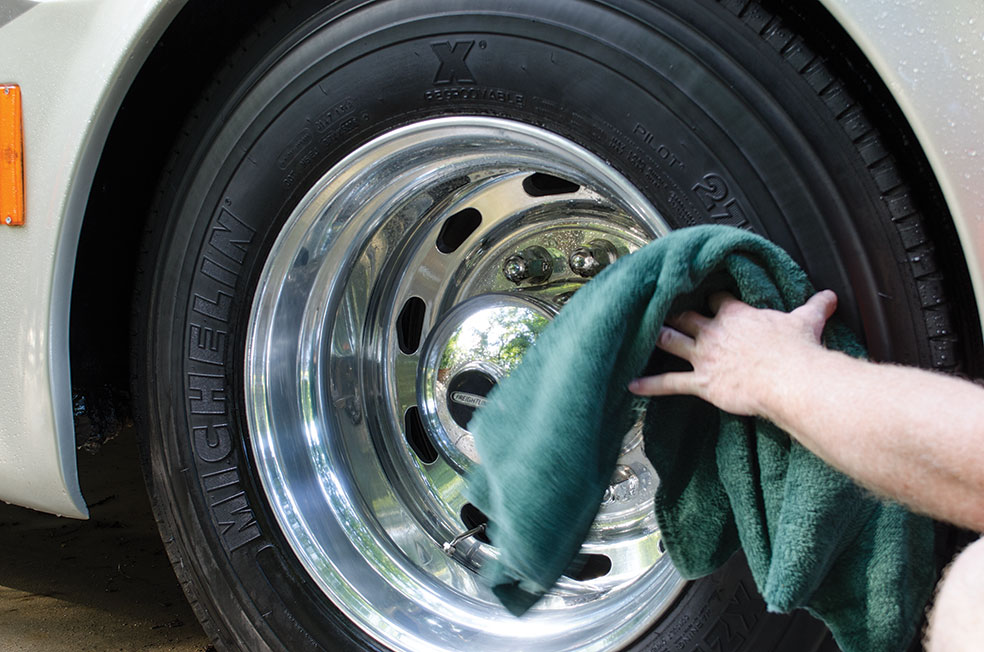
Using an old towel, wipe the tire completely dry in preparation for the 303 Aerospace Protectant, which goes on next.
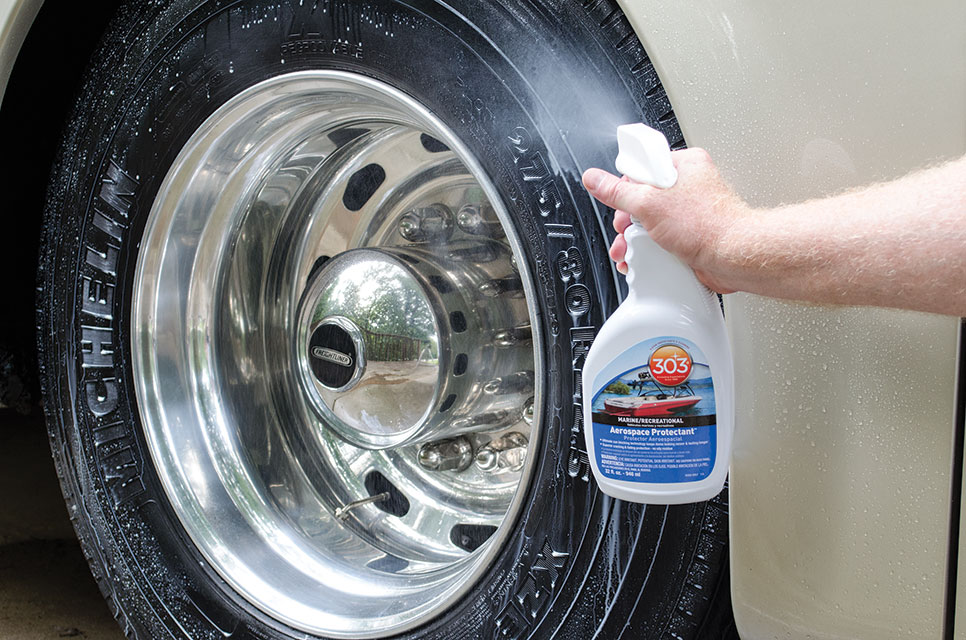
Once the tire is dry, spray it with the 303 Aerospace Protectant. Unlike some other tire dressings, it is water-based and actually helps tires look great and protects them from damaging UV rays. Many other automotive tire dressings contain very high levels of petroleum products and are damaging to tires. This is the reason Michelin specifically states not to use that type of product on motorhome tires.
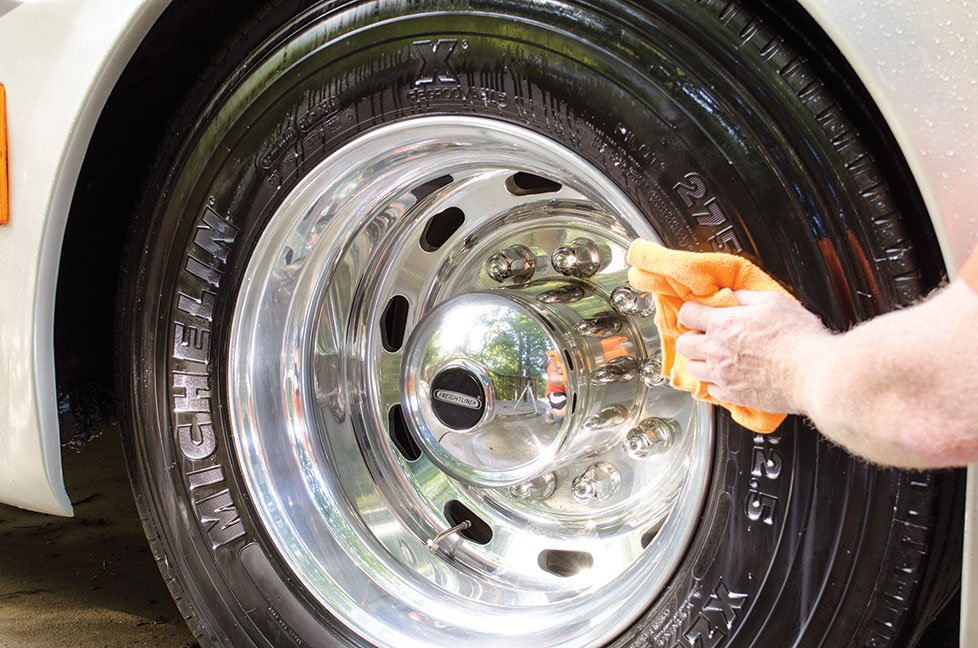
Immediately after applying the 303 Aerospace Protectant, wipe the surface with a dry cloth and buff until completely dry. The manufacturer suggests reapplying every three to five weeks for maximum UV protection, but I find that it lasts much longer because my motorhome tires are usually covered and stored.
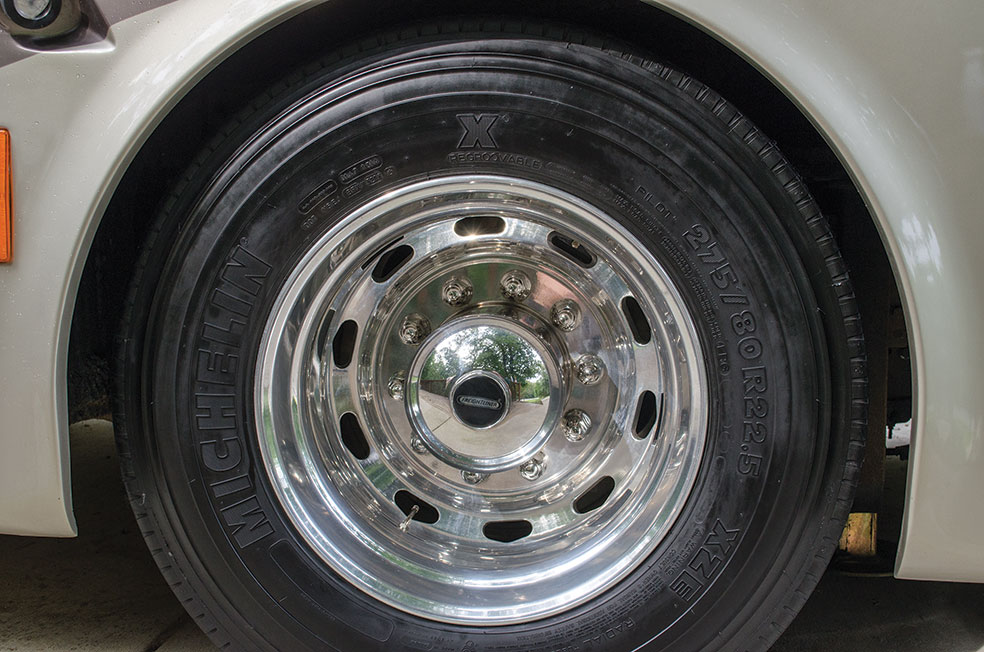
After wiping the surface dry you will be rewarded with a smooth matte surface that is also protected from UV rays and is static-free. You will also notice that the tires look good longer than unprotected tires. When you roll into your favorite resort with your tires as black as night, you will be the envy of all your neighbors.

